After a resounding 3-0 defeat against Croatia in the group stage of the 2018 World Cup, the alarms went off in the process of Jorge Sampaoli, which would only be the beginning of the end, before a very tough defeat against France that would eliminate them from the tournament in the Round of 16. After this, Lionel Scaloni’s internship was made official in Argentina, after his good participation in a sub-20 tournament, precisely with his assistants Pablo Aimar and Walter Samuel, who remain so to this day.
A shaky start began for the Argentine team, which in each game seemed like the last of Scaloni, many names appeared and none was that of the former Deportivo La Coruña player. With effort and work, he renewed the team, implemented a dynamic and modern working method and created a group with which he reached a new world final in Qatar.
The defeat of the Copa América 2019 in the semifinals by 2-0 against Brazil, would only be the beginning of a facelift and a desire to fight more, which could be seen two years later in their conquest of the Copa América, and in the reaching the final against Croatia, which once again made history together with Zlatko Dalic after being one of the best four teams in the tournament for two consecutive World Cups, with one of the smallest countries on the planet but a golden generation that was so close to touching glory.
In this tactical analysis, we dive into the tactics of both teams in form of analysis and see how Lionel Scaloni’s Argentina qualified for their sixth final in their history.
Lineups
Argentina went with a 4-4-2 joined by Emiliano Martínez in goal, Nahuel Molina, Cristián Romero, Nicolás Otamendi and Nicolás Tagliafico as the back-four, Leandro Paredes, Enzo Fernández, Alexis MacAllister, Rodrigo de Paul, Lionel Messi and Julián Álvarez.
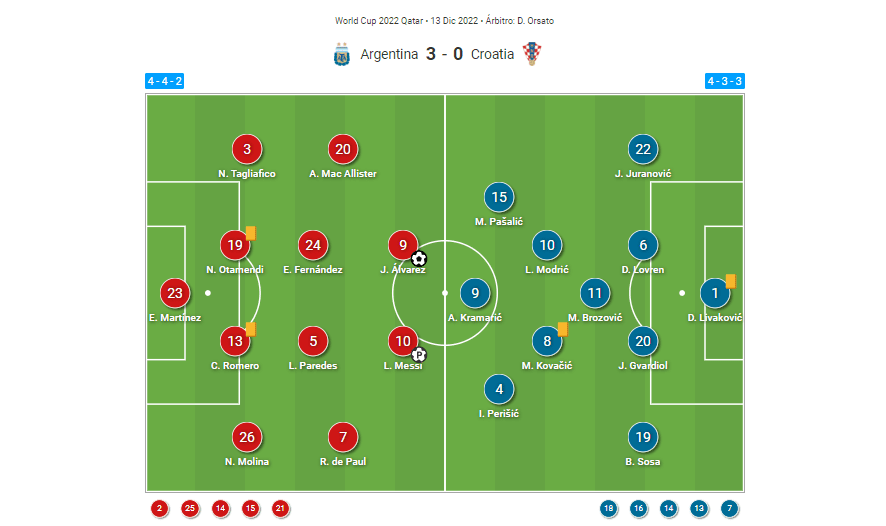
Croatia formed a 4-3-3 with Dominik Livakovic as the goalkeeper; Borna Sosa, Dejan Lovren, Josko Gvardiol, and Josip Juranovic on the defence; Luka Modric, Marcelo Brozovic and Mateo Kovacic on one of the best midfields of the tournament, ending with Andrej Kramaric, Ivan Perisic and Mario Pasalic on attack.
Argentina’s aggressive press and numerical superiority through the middle
Lionel Scaloni raised some doubts before the game about the selection of the starting eleven to face Croatia. Faced with the midfield three of so much control and balance by Mateo Kovacic, Luka Modric and Marcelo Brozovic, but the rapid rise of Borna Sosa on the left side of the pitch, the two options that were being considered for the Argentine coach was whether to congested the midfield with four players with the inclusion of Leandro Paredes, with a more defensive cut and distribution of the first pass as #6, thus freeing Enzo Fernández, or whether to attack the space liberated by Sosa, with Ángel di María.
In the end, he decided to have better control of the midfield with the inclusion of Paredes to the team, which clearly dominated both defensively and offensively, due to the numerical superiority that was shown when they had the ball as well as how well their midfielders aggressively slated to mark Kovacic or Modric when these, under his principle of more functional roles, sought to combine. Argentina moved the block from side to side extremely well when they had to defend and this covered the spaces to generate play for Croatia.
Even in moments of lucidity in Croatia, where they were creating plays constantly, especially in the left sector of the field with the Sosa-Perisic tandem, Argentina seemed quite comfortable defending and being more direct, which is something highly worked on by Lionel Scaloni from the beginning in the coaching process of the national team. The adaptability and comfort that his team has generated to play in a low block, with the ball being the protagonist or playing in a more direct football, has been more than positive and was demonstrated against Croatia, in the minutes before the 1-0 scored by Lionel Messi.
One of the first tactical aspects seen in the match was the defensive role of Julián Álvarez, who each game shows more that he is prepared for the elite level. He is a great player for high pressure. He never tires and seeks to run since he is tactically very correct and intelligent. As Scaloni mentioned after the match; “it was very important since he gave us a hand with one of the midfielders” which in this case was Brozovic. If the ball was played from side to side between the central defenders, he would not go to them but would cover the option of passing with Brozovic.
Behind him, one of the things that were most seen in the game: MacAllister and De Paul closed as wingers who went aggressively to fill the midfield and then jump wide if they had to. Inside, Paredes and Enzo provided more rigidity and balance inside, which were usually more zonal.
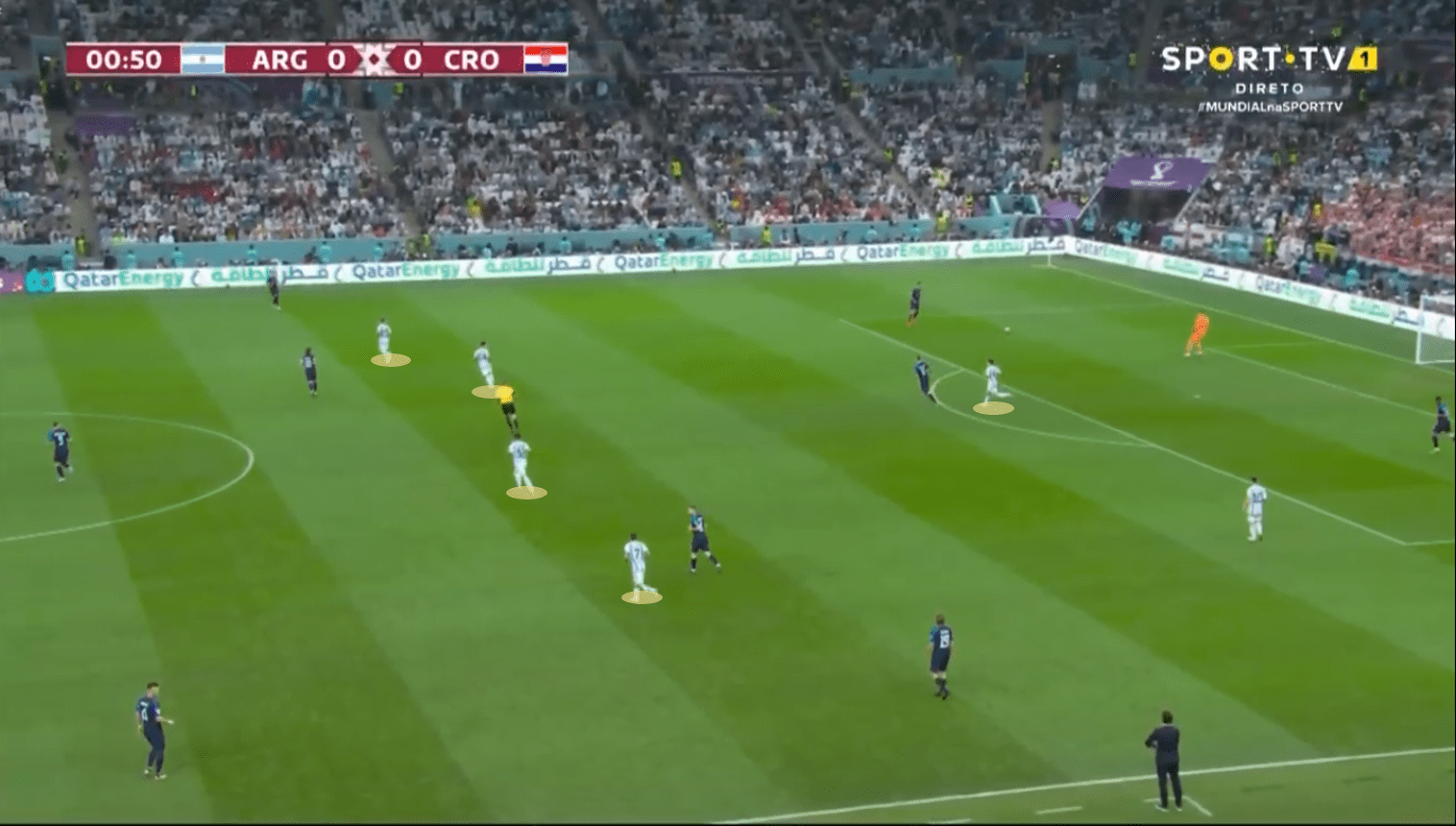
Argentina had a tendency when Croatia was looking to progress through midfield, as they have throughout the tournament: If the ball went to the front line, the first receiver had to take pressure from a close ranger, and so on with the next one that offered himself into space.
Argentina really coordinated and controlled these aspects of the game with aggressive jumps to mark the man in a kind of counter-pressure when playing in the middle that was suffocating since they had extra men and a system that did not stop scoring close to the rival, with smart, intense hedges behind them.
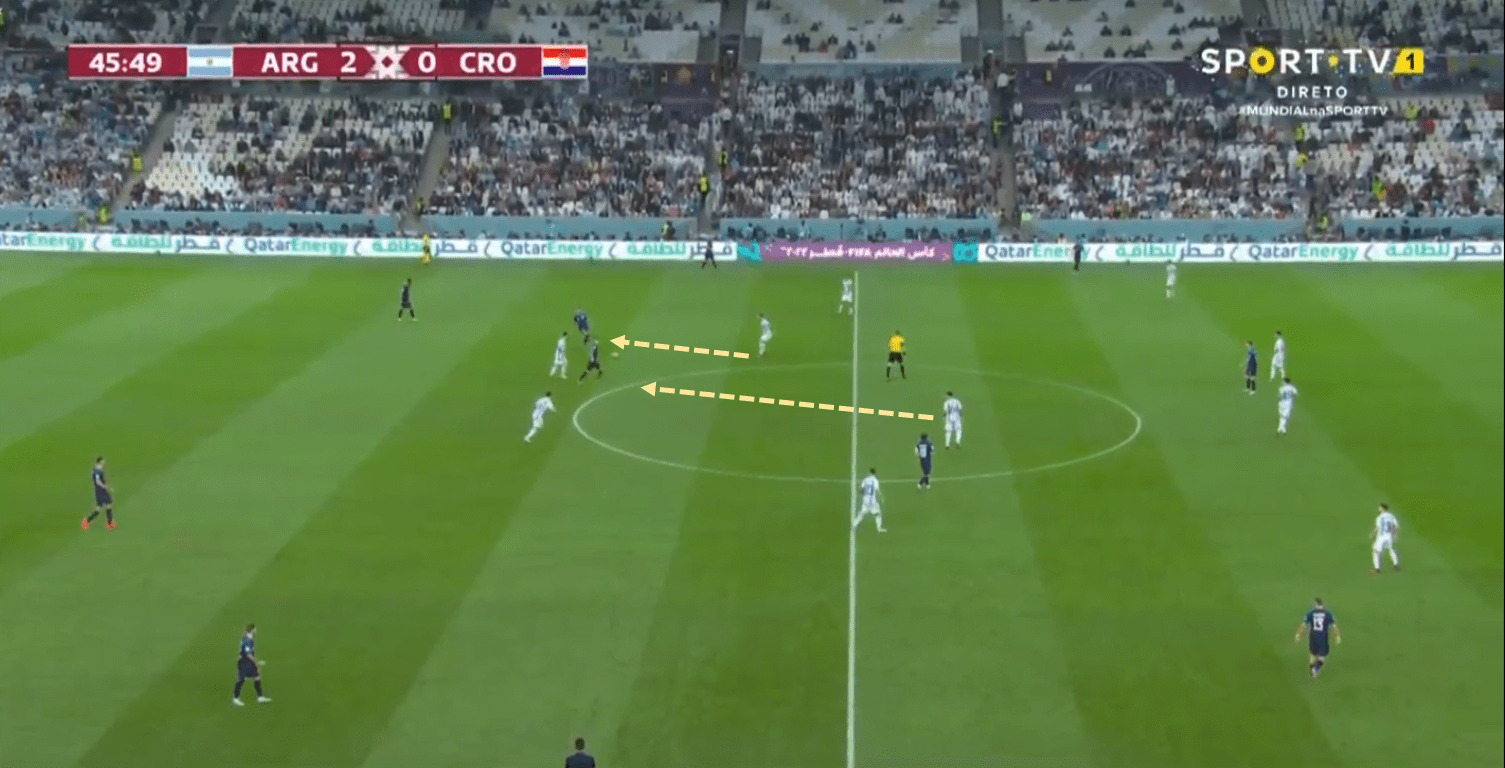
One of the things that Argentina wanted to take advantage of tactically in the match was the interval between Juranovic and Lovren, who, especially the second one, left a lot of space between them that they could attack with a good long pass. However, ahead of them, they had good zonal marking from Croatia that did not allow a ball to pass through their lines.
That is why Scaloni sought, once again, to stretch the rival block, in order to generate dangerous opportunities. He positioned his two full-backs high up almost as wingers, while his midfielders had enough freedom of movement to join as early in the lineup or higher.
In this image, for example, we can see how Scaloni’s men deployed their full-backs quite high, and the players who were relegated were Messi and Rodrigo de Paul, who could then be seen much more advanced and that generated dynamism within the team. Normally the idea was to stack with these players in the middle, to try to activate the left where Enzo would normally receive and look upon him to find a player going into the space between Juranovic and Lovren.
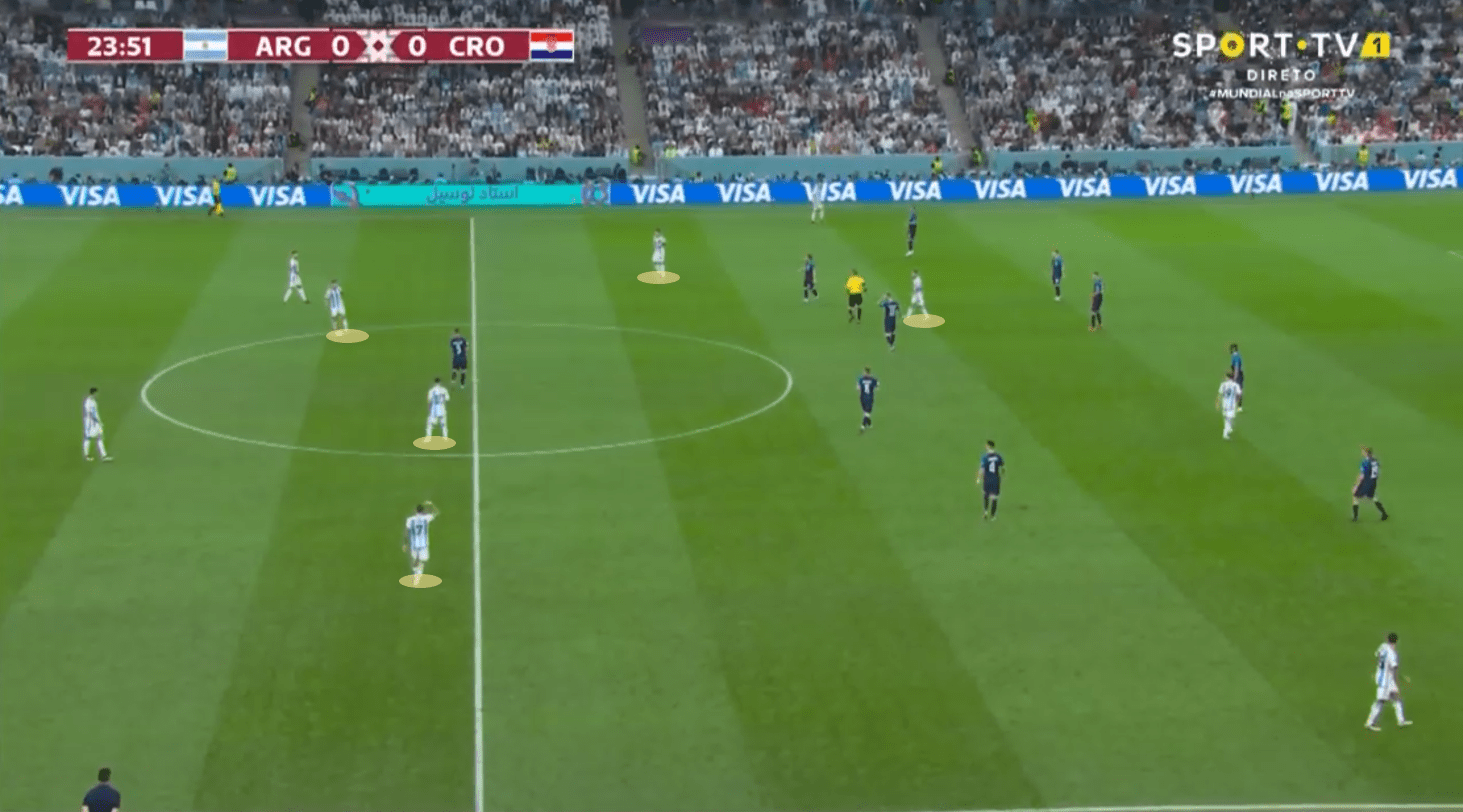
But Lionel Scaloni ran into a problem. Croatia tried to fill these spaces with one more footballer, Pasalic, the winger on this side who came together to close Enzo’s inclinations and Tagliafico’s runs from outside in or inside out at certain times.
As in this figure, the left back who was a substitute for Marcos Acuña in this match and did quite well makes the run for Enzo Fernández to enable him with a through pass. Given this, the options there were complicated. Still, Argentina kept looking for him on that same side since they would know that an error could be generated if they found these two players setting up the back-line and Pasalic wouldn’t do the defensive movement to create a back-five.
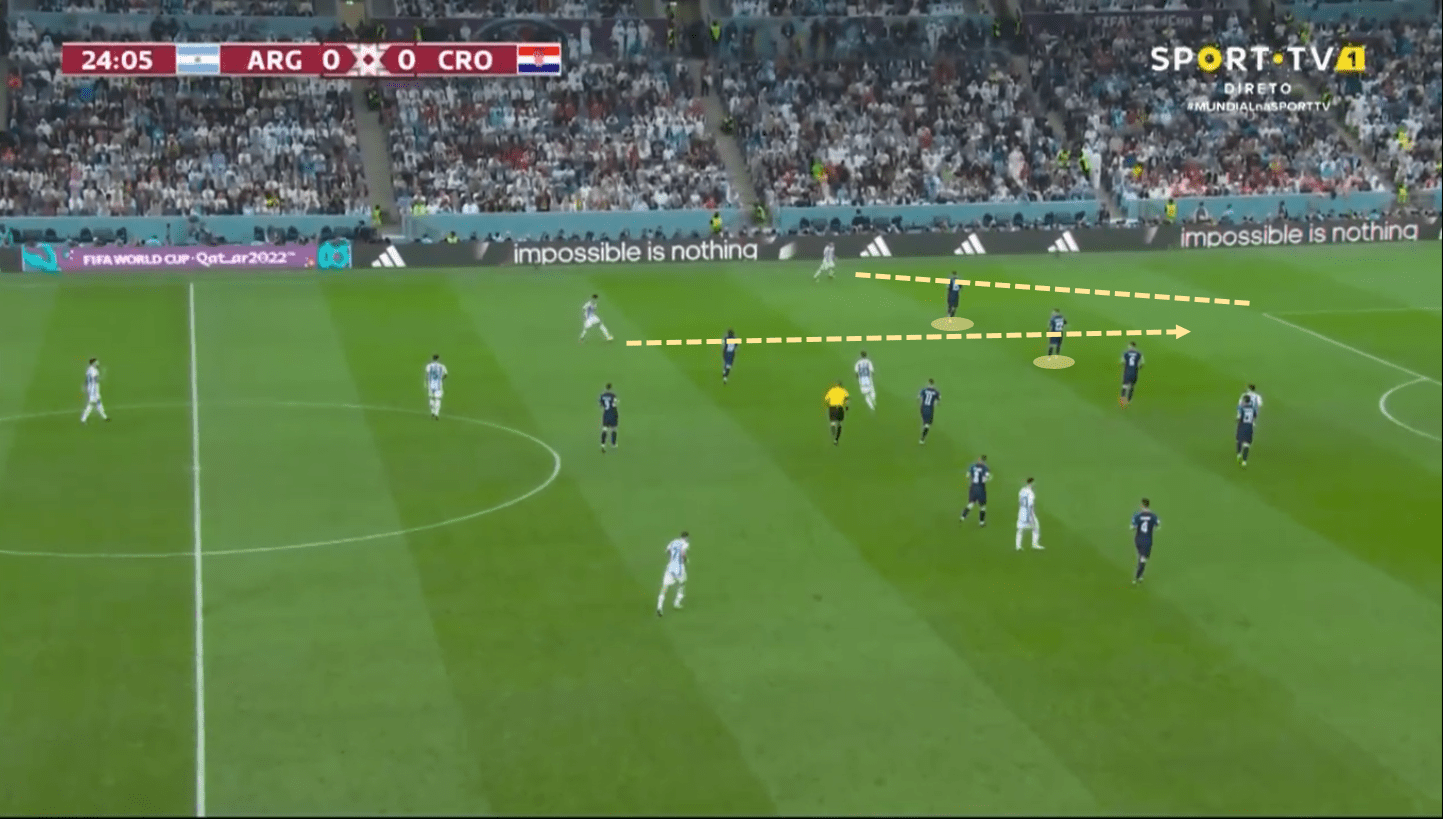
Argentina also sought, through these stretching of the block with the full-backs pinning out-wide, in full turn of the game, seeking to break inside with receptions from players like MacAllister, Enzo or even Messi.
In the image that we can see below, Rodrigo de Paul receives the ball from outside, where he finds a space in the middle to play with the Brighton player, who then passes it to Enzo Fernández who with some combinations on the edge of the box, something constantly sought to break the last line, ended up finishing off from long distance.
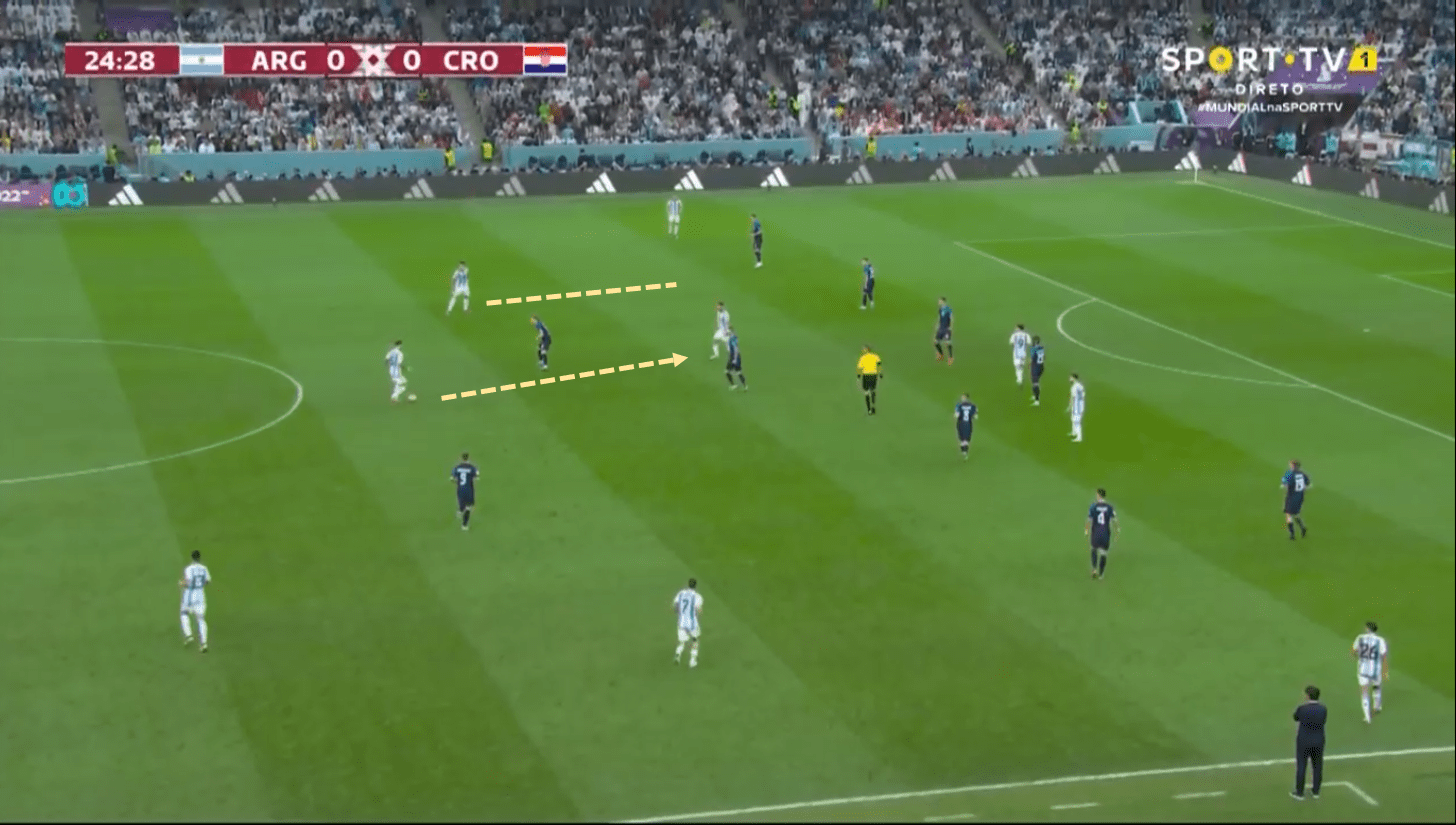
The play prior to the penalty that Dominik Livakovic conceded over Julián Álvarez was clearly Argentina’s desire to have a player like Enzo Fernández more advanced between the lines, lurking what Lovren-Juranovic could generate before the space and momentum of one of the two with his aggressive jumps off the line.
In addition, Enzo’s half-space receptions made the Celtic player hesitant to come out, which could create spaces behind him or behind Lovren, who was going to cover him. It was precisely what happened in the said play, with the ex-Liverpool player very badly positioned after his jump to cover Juranovic, Álvarez took the opportunity to sting into space and generate the penalty.
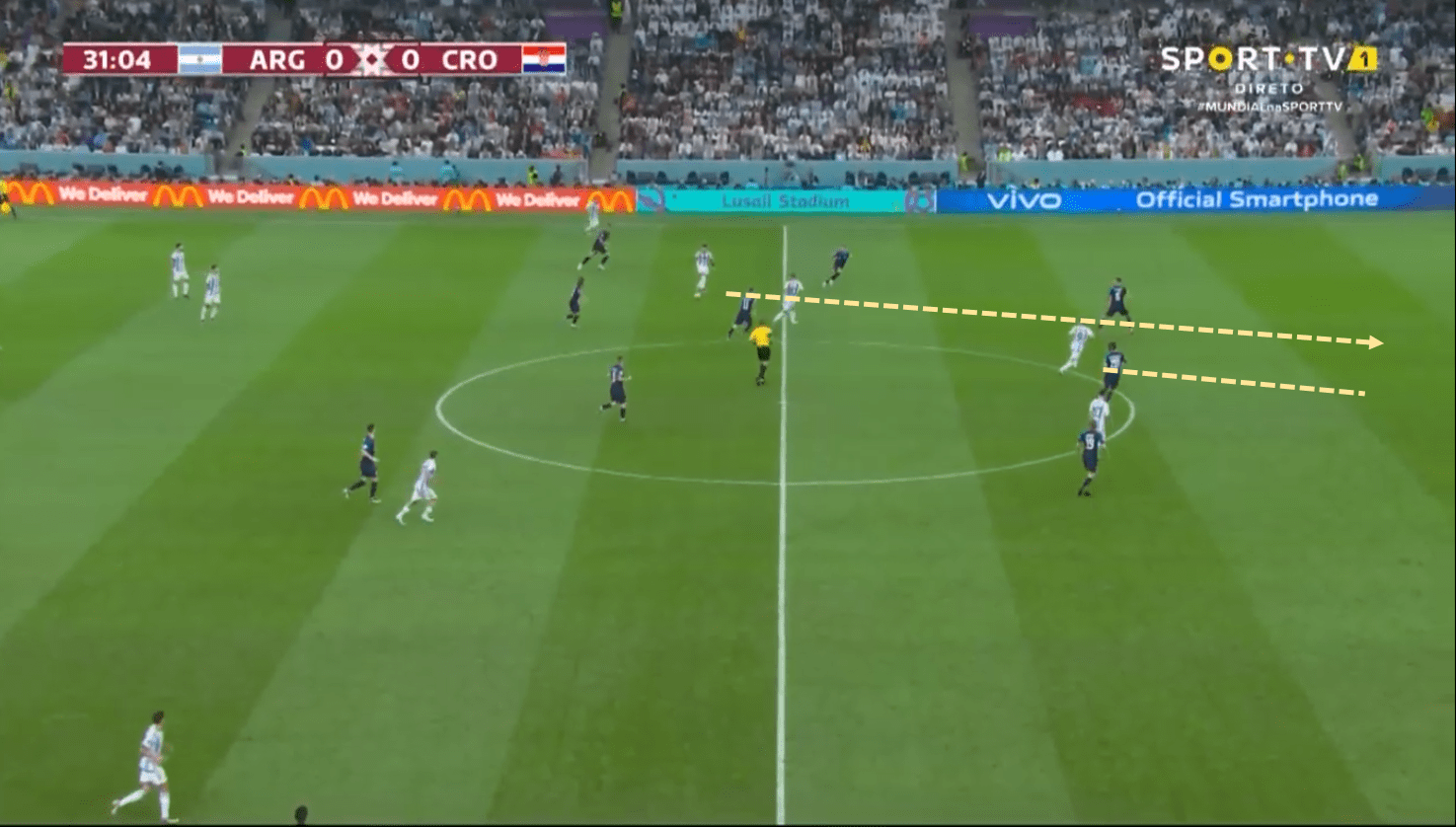
The tension of playing against such a motivated Lionel Messi was seen a lot in a Croatia that sought to be more zonal than anything else, while the PSG player was activated by absolutely all sides and pockets of the field. Even in the third goal, he made one of the best individual plays of the 2022 World Cup against possibly the best central defender in the tournament.
Conclusion
Argentina lived one of its best matches in the World Cup that allows them to play a final again. It will be their sixth in history, of which they won 2 and Lionel Messi has been and will be in 2, it only remains to be seen if, after the final whistle on 12-18-2022, he will have lifted the prestigious trophy in any of them.






Comments